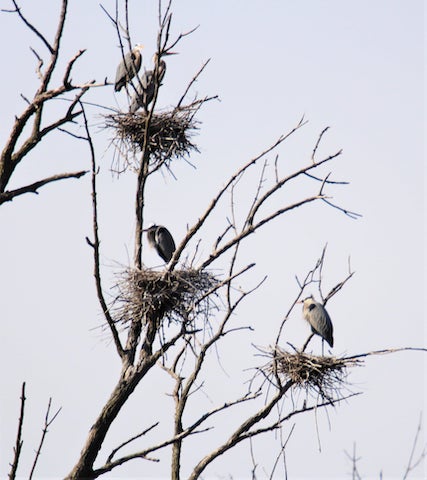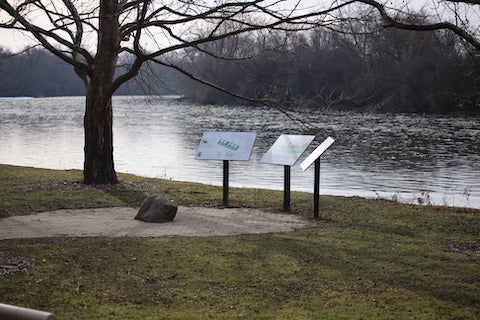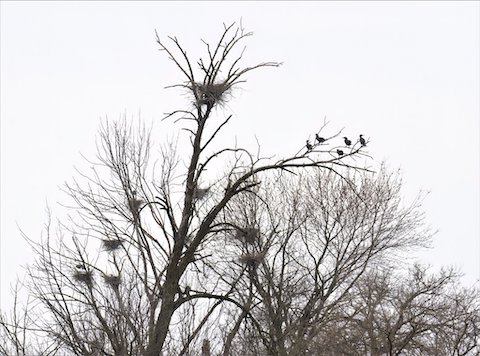
I frequently like to take drives along the Fox River where roads closely parallel the riverbank. One such road that I particularly like to take during this time of year (spring) is IL Route 25 from Aurora south to Oswego. This route passes by some great fishing areas, the sites of several water willow stands. These were planted by Friends of the Fox River in conjunction with the Illinois Smallmouth Alliance and the Illinois Department of Natural Resources.
Also included were Violet Patch Park, which is the site of the memorial to “The Fox” (Jim Phillips), and a Great Blue Heron rookery on some islands just north of the US Route 30 bridge at the Kane/Kendall County line.
Starting in late March and continuing through April into early May, pairs of Great Blue Herons can be seen tending their nests improbably high in the branches of the trees on these Fox River islands. It’s kind of a startling sight to see these large, long-legged wading birds (they can be up to 4.5 feet tall with a 6.5 foot wingspan) standing on their stick nests so high in their precarious locations in the crowns of these trees!
As startling as the sight is, it’s certainly another welcome sign of spring. While a few hearty Great Blue Herons overwinter in the Fox Valley, most migrate south for the winter and return to the Fox River in the spring, when the river ice clears and the fish and amphibians that they feed on become more accessible. They also return at this time of year to nest in rookeries (large groups of nests) located throughout the Fox Valley and other areas of northern Illinois.
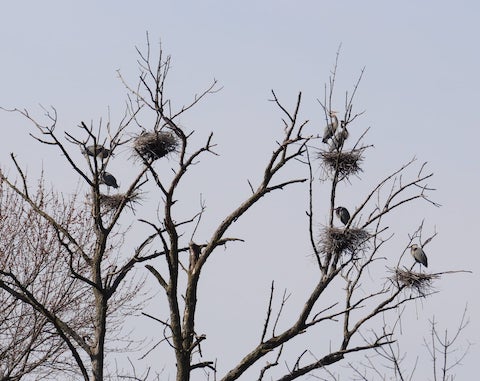
The nests in the rookery on the islands at the Kane/Kendall County line have been in place for years. The herons return to these nests year after year. The male Great Blue Herons return to the nests first and attempt to lure passing females to the nests they occupy. The herons are monogamous during each breeding season but generally select new mates each year.
Once the birds pair up, the females lay 2 to 6 pale-bluish eggs that are from 2.5 to 3“ long. The eggs hatch after 27 to 29 days with both the females and males sharing incubating duties. The chicks are ready to fledge about two months after hatching. If the young birds live to fledge (typically only two or three from each nest do), they can live to be nearly 25 years old!
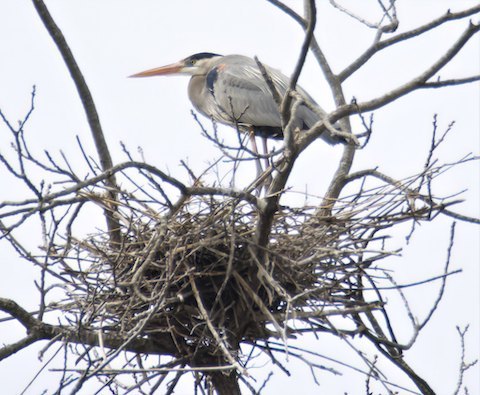
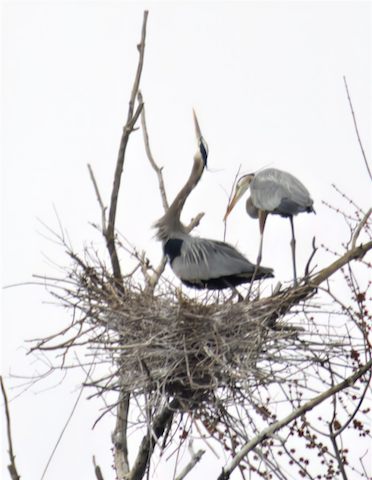
Great Blue Herons are very interesting to observe throughout the year and are fairly common sights in our Fox River Valley. They are very stealthy hunters who move very slowly and patiently in search of an unfortunate fish or frog (or even mouse or gopher) with lightning quickness and their dagger-like bills. Their almost prehistoric “croaks” are a familiar sound to visitors along the river.
If you find yourself in the Aurora/Montgomery/Oswego area and would like to see an interesting sight, take a drive along Route 25 and keep your eyes peeled! The heron rookery provides quite a sight to see! As long as you’re there, continue a couple of miles further south to Violet Patch Park and visit the memorial to one of the original watershed warriors, Jim Phillips (aka “The Fox”). It’s an idyllic sight along the river, fitting for a memorial to a man who dedicated his life to protecting it.
Until next month, enjoy the warming weather and all the natural wonders of spring along our beautiful Fox River!

